|
|
|
|
|
Oil On
Canvas, Real Flavor of Old Masters
|
|

|
ARTWORKS
INDEX
A B C D E F G H I J K L M N O P Q R S T U V W X Y Z |
ARTISTS
INDEX
A B C D E F G H I J K L M N O P Q R S T U V W X Y Z |
|
|
| | |
|
|
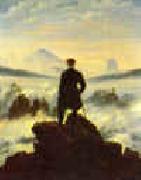 |
Caspar David Friedrich -- Click Here
|
|
1774-1840 Caspar David Friedrich Locations German painter, studied art at Copenhagen, and in 1798 settled in Dresden. Friedrich painted chiefly landscapes and seascapes, with and without figures, architectural pictures, including a few of Dresden, and some religious subjects. Religious feeling and symbolism permeate his œuvre, of which the seascape with figures, Die Lebensstufen, is a characteristic example. He possessed considerable power to convey mood in landscape. Almost forgotten in the 19th c. and early 20th c., interest in his work increased considerably in the mid-20th c. He is hardly represented in Britain, but an exhibition of 112 of his pictures at the Tate Gallery in 1972 attracted much attention. F. G. Kersting was a friend of Friedrich. |
|
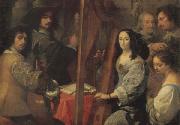 |
Carlo Francesco Nuvolone -- Click Here
|
|
Italian Baroque Era Painter, 1609-1662
was an Italian painter of the Baroque period, active mainly in Lombardy. He was born in Milan to an Cremonese father and mannerist painter, Panfilo Nuvolone. After working with his father, he studied under Giovanni Battista Crespi (il Cerano) in the Accademia Ambrosiana in Milan. In that studio he would have encountered Daniele Crespi and Giulio Cesare Procaccini. Of particular interest is his depiction of himself as a painter surrounded by his family of artists |
|
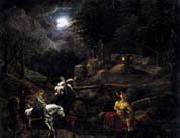 |
Carl Philipp Fohr -- Click Here
|
|
German, 1795-1818,German painter and draughtsman. His first drawing lessons, from the age of 13, were from Friedrich Rottmann (1768-1816), the father of the painter Carl Rottmann. In 1810 the Darmstadt Court Councillor, Georg Wilhelm Issel, discovered Fohr sketching at Stift Neuberg near Heidelberg and, the following year, invited him to Darmstadt and provided encouragement and financial support. From 1813 Fohr carried out commissions for Grand Duchess Wilhelmina of Hesse, for whom he produced a Sketchbook of the Neckar Region, a collection of views and historical subjects (30 watercolours; 1813-14) and also a Baden Sketchbook (30 watercolours, 1814-15; both Darmstadt, Hess. Landesmus.). These far surpassed the usual level attained in this genre in their sharpness of detail, delicacy of colour and pictorial inventiveness. The Crown Princess granted him an annual pension of 500 guilders. From July 1815 to May 1816, Fohr was a student of landscape painting at the Kunstakademie in Munich. |
|
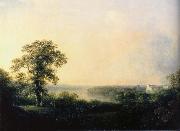 |
Carl Johan Fahlcrantz -- Click Here
|
|
Swedish, 1774-1861, Swedish painter. He began his artistic training in Stockholm as a pupil of the theatre painters J. G. Brusell and E. Limnell (1764-1861). He also studied under the French landscape painter Louis Belanger (1736-1816). In 1805 he was awarded a scholarship to go to Italy, but he preferred to use it to travel within Sweden, as this corresponded more with his interest in painting his native landscape in a National Romantic style. Fahlcrantz settled permanently in Sweden, never travelling outside the Nordic countries. In 1819 he became a professor at the Royal Academy of Arts in Stockholm and in the 1820s Karl XIV commissioned a series of major works from him. Oscar I followed suit, as did numerous other buyers inside and outside Sweden. In this way, Fahlcrantz's paintings were distributed as far as Denmark, Bavaria, Russia and America. |
|
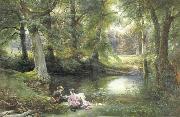 |
Carl Friedrich WilhelmTrautschold -- Click Here
|
|
1815-1877
|
|
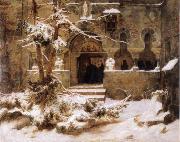 |
Carl Friedrich Lessing -- Click Here
|
|
German Painter, 1808-1880,Painter, great-nephew of GOTTHOLD EPHRAIM LESSING. He studied architecture in Berlin at the Kenigliche Bau-Akademie under Karl Friedrich Schinkel, before transferring to the Kunstakademie, where he became a pupil of Wilhelm Schadow in 1825. The next year Lessing followed Schadow to Desseldorf, where the latter had been appointed Director of the Kunstakademie. Almost to the end of his career Lessing was to follow Schadow's rules for a standard series of procedures in the production of a finished work: compositional sketch, oil study, detailed model study, cartoon and underdrawing for the final painting. Without an official position, Lessing worked at the Desseldorf Akademie until 1858 |
|
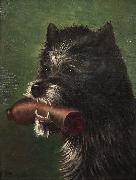 |
Carl Friedrich Deiker -- Click Here
|
|
(1836-1892 ) - Painter |
|
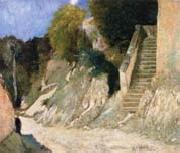 |
Carl Fredrik Hill -- Click Here
|
|
Swedish Painter, 1849-1911,Swedish painter and draughtsman. He grew up in the university city of Lund, where his father was a mathematics professor. Despite severe opposition from his father, he studied landscape painting at the Konstakademi in Stockholm (1871-2), under Johan Edvard Bergh and Per Daniel Holm (1835-1903). He also frequently copied Dutch Old Masters, particularly Jacob van Ruisdael. After seeing the work that Alfred Wahlberg had sent home from Paris, Hill began to abandon his initial approach to form and colour, and he left for Paris in November 1873. His most important experience there was his encounter with the painting of Jean-Baptiste-Camille Corot: 'Corot has discovered a new world, because he has discovered a new way of looking at the old', he wrote in a letter. Other contemporary French painters Hill admired were Alexandre-Gabriel Decamps, Charles-Fran?ois Daubigny, Jean-Franeois Millet and Theodore Rousseau. From Courbet he learnt how to use colour to suggest the surface texture of stone quarries and gravel hills. In Barbizon in 1874 and 1875 Hill met the Hungarian painters Laszlo Pael and Mihaly von Muncacsy. His paintings of this time, for example Autumn Landscape, Evening: Fontainebleau (1875; Malm?, Kstmus.), are characterized by their dark 'luminarism' and their debt to Corot's later works. |
|
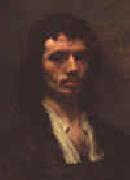 |
Carel Fabritus -- Click Here
|
|
1622-1654
Dutch
Carel Fabritus Locations
Painter. His oeuvre consists of a scant dozen paintings, since research has rigorously discounted many previously attributed works. These few paintings, however, document the painter unique development within his brief 12-year career. He is often mentioned as being the link between Rembrandt and the Delft school, particularly Pieter de Hooch and Jan Vermeer, whose depiction of light owes much to Fabritius late works in which his use of cool silvery colours to define forms in space marks a radical departure from Rembrandt use of chiaroscuro. |
|
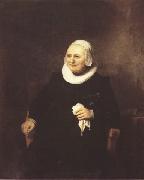 |
Carel fabritius -- Click Here
|
|
Dutch painter (b. 1622, Middenbeemster, d. 1654, Delft
His oeuvre consists of a scant dozen paintings, since research has rigorously discounted many previously attributed works. These few paintings, however, document the painter's unique development within his brief 12-year career. He is often mentioned as being the link between Rembrandt and the Delft school, |
|
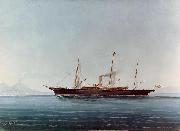 |
Campin, Robert, Follower of -- Click Here
|
|
Italian, 1400s |
|
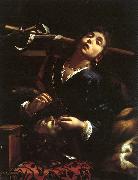 |
Cairo, Francesco del -- Click Here
|
|
Italian Baroque Era, 1598-1674 |
|
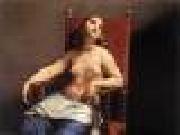 |
CAGNACCI, Guido -- Click Here
|
|
Italian Baroque Era Painter, 1601-1681 |
|
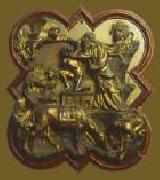 |
BRUNELLESCHI, Filippo -- Click Here
|
|
Italian Early Renaissance Sculptor and Architect, 1377-1446
Filippo Brunelleschi (1377 ?C April 15, 1446) was one of the foremost architects and engineers of the Italian Renaissance. All of his principal works are in Florence, Italy. As explained by Antonio Manetti, who knew Brunelleschi and who wrote his biography, Brunelleschi "was granted such honors as to be buried in Santa Maria del Fiore, and with a marble bust, which they say was carved from life, and placed there in perpetual memory with such a splendid epitaph."
In 1401,Brunelleschi entered a competition to design a new set of bronze doors for the baptistery in Florence. Along with another young goldsmith, Lorenzo Ghiberti, he produced a gilded bronze panel, depicting the Sacrifice of Isaac. His entry made reference to a classical statue, known as the 'thorn puller', whilst Ghiberti used a naked torso for his figure of Isaac. In 1403, Ghiberti was announced the victor, largely because of his superior technical skill: his panel showed a more sophisticated knowledge of bronze-casting; it was completed in one single piece. Brunelleschi's piece, by contrast, was comprised of numerous pieces bolted to the back plate. Ghiberti went on to complete a second set of bronze doors for the baptistery, whose beauty Michelangelo extolled a hundred years later, saying "surely these must be the "Gates of Paradise." |
|
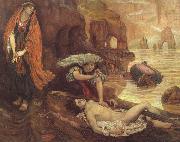 |
Brown, Ford Madox -- Click Here
|
|
English Pre-Raphaelite Painter, 1821-1893
English painter and designer. The son of a retired ship's purser who had settled at Calais, Brown received an academic training under Albert Gregorius (1774-1853) at Bruges, under Pieter van Hanselaere (1786-1862) at Ghent and under Baron Gustaf Wappers at the Academie in Antwerp (1837-9). He moved to Paris in 1840, married the following year and studied independently of the ateliers, |
|
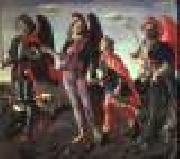 |
BOTTICINI, Francesco -- Click Here
|
|
Italian Early Renaissance Painter, ca.1446-1498
Francesco di Giovanni Botticini (1446 ?C July 22, 1498) was an Italian Early Renaissance painter. He studied under Cosimo Rosselli and Andrea del Verrocchio. He was born in Florence in 1446 and is mostly remembered for his painting entitled "Assumption of the Virgin"; he died in 1498 (some sources say 1497). He established his own workshop after a brief period as Neri di Bicci's assistant; the shop was renowned for its decorative works, a few of which can be seen in the cloistered church of Empoli. Some of Botticini's works are said to be overshadowed by his Florentine contemporaries, such as Filippino Lippi and Botticelli, who often influenced Botticini's works. |
|
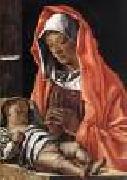 |
BONSIGNORI, Francesco -- Click Here
|
|
Italian painter, Veronese school (b. 1455, Verona, d. 1519, Caldiero)
Italian painter. His father, Albertus Bonsignori, was reputedly an amateur painter; and besides Francesco, the oldest and most talented of his children, three other sons, including Bernardino (c. 1476-c. 1520) and Girolamo (b c. 1479), are also recorded as painters. Barely 20 paintings and fewer than a dozen drawings have been attributed to Francesco Bonsignori. |
|
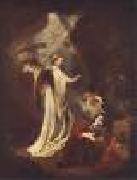 |
BOL, Ferdinand -- Click Here
|
|
Dutch Baroque Era Painter, 1616-1680
Ferdinand was born in Dordrecht as the son of a surgeon, Balthasar Bol.[2] Ferdinand Bol was first an apprentice of Jacob Cuyp in his hometown and/or of Abraham Bloemaert in Utrecht. After 1630 he studied with Rembrandt, living in his house in Sint Antoniesbreestraat, then a fashionable street and area for painters, jewellers, architects, and many Flemish and Jewish immigrants.[3] In 1641 Bol started his own studio.
In 1652 he became a burgher of Amsterdam, and in 1653 he married Elisabeth Dell, whose father held positions with the Admiralty of Amsterdam and the wine merchants' guild, both institutions that later gave commissions to the artist. Within a few years (1655) he became the head of the guild and received orders to deliver two chimney pieces for rooms in the new town hall designed by Jacob van Campen, and four more for the Admiralty of Amsterdam.
Portrait of a Woman Dressed as a Huntress by Ferdinand Bol, courtesy Figge Art MuseumBy this time Bol was a popular and successful painter. His palette had lightened, his figures possessed greater elegance, and by the middle of the decade he was receiving more official commissions than any other artist in Amsterdam.[4] Godfrey Kneller was his pupil.[5] Bol delivered four paintings for the two mansions of the brothers Trip, originally also from Dordrecht.[6]
Bol's first wife died 1660. In 1669 Bol married for the second time to Anna van Arckel, widow of the treasurer of the Admiralty, and apparently retired from painting at that point in his life.[7]In 1672 the couple moved to Keizersgracht 472, then a newly designed part of the city, and now the Museum van Loon. Bol served as a governor in a Home for Lepers. Bol died a few weeks after his wife, on Herengracht, where his son, a lawyer, lived.
Probably his best known painting is a portrait of Elisabeth Bas, the wife of the naval officer Joachim Swartenhondt and an innkeeper near the Dam square. This and many other of his paintings would in the 19th century be falsely attributed to Rembrandt. |
|
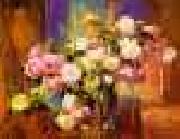 |
Bischoff, Franz -- Click Here
|
|
Austrian, practiced mainly in America, 1864-1929
was an American artist known primarily for his beautiful floral paintings and California landscapes. He was born in Bomen, Austria on January 9, 1864 and as a young teenager immigrated to the United States where he became a naturalized citizen. While in Europe, his early training was focused upon applied design, watercolor and ceramic decorations.After having lived and worked in New York, Fostoria, Ohio and Dearborn, Michigan, Franz Bischoff decided to visit California in 1900 and ultimately chose to settle in Los Angeles in 1906. Shortly after arriving, he started making arrangements to design and build a large Italian Renaissance style home in Pasadena that also became his studio. This landmark home was completed in 1908. Inspired by the California countryside, Bischoff set attempted to capture the area's brilliant light and diverse landscapes. Spending less time with ceramic painting, Bischoff painted local farms, fishing wharfs, and coastal landscapes. Recognized during his career for use of color and vivid composition, his paintings always displayed reverence for nature. |
|
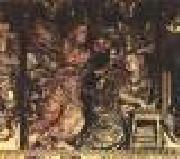 |
BIGARNY, Felipe -- Click Here
|
|
Spanish Sculptor, ca.1480-1542 |
|
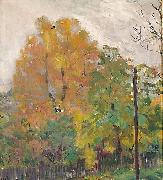 |
Bernhard Folkestad -- Click Here
|
|
1879 - 1933) was a Norwegian essayist and painter. He was born in London, where his father assisted at the Norwegian Seamen Mission. Among his painting teachers were Kristian Zahrtmann and Laurits Tuxen. His paintings Mørkeloftet from 1905, and Høns i høstsol and Grønnsaker from 1906 are all located in the National Gallery of Norway. Among his books are Svingdøren from 1926, Sol og morild from 1929, and Gullfisken from 1933. |
|
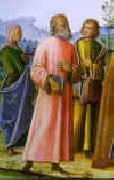 |
Bernardino Fungai -- Click Here
|
|
Italian
1460-1516
Italian painter. He is recorded in 1482 as Benvenuto di Giovanni garzone at work on the monochrome frescoes decorating the drum of the cupola of Siena Cathedral. Most scholars have accepted Benvenuto as Fungai teacher but stress the greater influence of Matteo di Giovanni; other proposals have included Giovanni di Paolo and, following the reattribution of paintings traditionally ascribed to Giacomo Pacchiarotti, Pietro Orioli. Fungai depended heavily on the preceding generation of Sienese painters and was considerably influenced by the contemporary activity of Pietro Perugino, Luca Signorelli and Bernardino Pinturicchio in and around Siena. His works are characterized by the docility of the figures, a keen decorative sensibility in the use of colour and the treatment of drapery and landscape, and a pleasantly engaging narrative skill. Although identification of works from his early career is problematic, a sizeable oeuvre has been ascribed on the basis of a signed and dated altarpiece executed for S Niccole al Carmine depicting the Virgin and Child Enthroned with SS Sebastian, Jerome, Nicholas and Anthony of Padua (1512; Siena, Pin. N.).
|
|
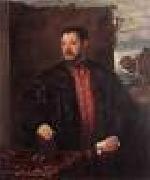 |
BECCARUZZI, Francesco -- Click Here
|
|
Italian painter, Treviso school (b. ca. 1492, Conegliano, d. before 1563, Treviso)
Francesco Beccaruzzi (c. 1492 - 1562) was an Italian painter of the Renaissance era, active near his hometown of Conegliano and in the neighborhood of Treviso. He was influenced by both Il Pordenone and later Titian. He painted Saint Francis receiving stigmata (1545) from Conegliano, but now in the Accademia in Venice. |
|
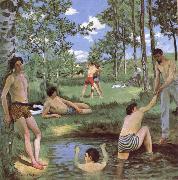 |
Bazille, Frdric -- Click Here
|
|
Studied under Charles Gleyre.
French Impressionist Painter, 1841-1870
|
|
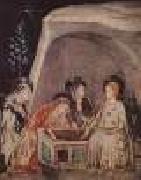 |
BASSA, Ferrer -- Click Here
|
|
Spanish painter
active 1324-1348
His workshop was in Calle Cucurulla, Barcelona, and commissions from a variety of patrons, mostly royal, are documented. In 1324 he was paid for painting two chapels and two crosses for the church at Sitges. Between c. 1333 and c. 1335 he illuminated a book on the Usages of Barcelona and Customs of Catalonia for Alfonso IV of Aragon, and in 1335 he was paid for an altarpiece. Further payments, in 1339 and 1340, were for two altarpieces for the chapel of the Aljaferea Palace (a Moorish palace) in Saragossa. About 1340 he received a commission for an altarpiece of St Hilary for the diocese of Lleida (Sp. Lerida). In 1341 Bassa had begun work on three altarpieces for the Episcopal See at Lleida, commissioned by Ot de Montacada (c. 1290-1341). In 1342 Peter IV (the Ceremonious) of Aragon asked his wife, Maria of Navarre, to send him a Book of Hours illuminated by Ferrer Bassa, and in the same year the artist was also paid for a commission by Queen Constanza of Mallorca. In 1343 and 1344 he was paid for an altarpiece and other works for the chapel of the Aljaferea Palace in Saragossa and for an altarpiece for the chapel of the royal palace at Barcelona. In 1344 Bassa was commissioned to decorate the S Miguel Chapel, then the cell of the abbess in the Pedralbes Monastery, Barcelona, although he only started work in 1346. He was involved in further royal commissions in 1345, including an altarpiece for the chapel of the castle at Perpignan. |
|
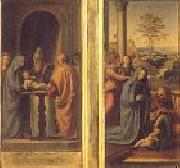 |
BARTOLOMEO, Fra -- Click Here
|
|
b. 1473, Firenze, d. 1517
b. 1473, Firenze, d. 1517
He was born in Savignano di Prato, Tuscany. He received the nickname of Baccio della Porta for his house was near the Porta ("Gate") San Pier Gattolini.
Starting from 1483 or 1484, by recommendation of Benedetto da Maiano, he apprenticed in the workshop of Cosimo Rosselli. In 1490 or 1491 he began a collaboration with Mariotto Albertinelli. In the late 1490s Baccio was drawn to the teachings of Fra Girolamo Savonarola, who denounced what he viewed as vain and corrupt contemporary art. Savonarola argued for art serving as a direct visual illustration of the Bible to educate those unable to read the book. From 1498 is his famous portrait of Savonarola, now in the Museo Nazionale di San Marco in Florence. The following year he was commissioned a fresco of the Universal Judgement for the Ospedale di Santa Maria Nuova, completed by Albertinelli and Giuliano Bugiardini when Baccio became a Dominican friar on July 26, 1500. The following year he entered the convent of San Marco.
He renounced painting for several years, not resuming until 1504 when he became the head of the monastery workshop in obedience to his superior. In that year he began a Vision of St. Bernard for Bernardo Bianco's family chapel in the Badia Fiorentina, finished in 1507. Soon thereafter, Raphael visited Florence and befriended the friar. Bartolomeo learned perspective from the younger artist, while Raphael added skills in coloring and handling of drapery, which was noticeable in the works he produced after their meeting. With Raphael, he remained on the friendliest terms, and when he departed from Rome, left in his hands two unfinished pictures which Raphael completed.
At the beginning of 1508 Bartolomeo moved to Venice to paint a Holy Father, St. Mary Magdalene and St. Catherine of Siena for the Dominicans of San Pietro Martire in Murano, influenced somewhat by Venetian colorism. As the Dominicans did not pay the work, he took it back to Lucca, where it can be seen now. Also in Lucca, in the October 1509, he painted by Albertinelli an altarpiece with Madonna and Child with Saints for the local cathedral. On November 26, 1510 Pier Soderini commissioned him an altarpiece for the Sala del Consiglio of Florence, now in the Museum of San Marco. Two years later he finished another altarpiece for the cathedral of Besancon. |
|
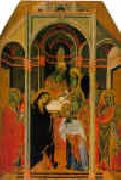 |
Bartolo di Fredi -- Click Here
|
|
Italian Gothic Era Painter, ca.1330-1410
He had a large studio and was one of the most influential painters working in Siena and the surrounding towns in the second half of the fourteenth century. He registered in the Guild of that city in 1355; he had several children, who all died before him, with the exception of Andrea Bartoli. He was the companion of Andrea Vanni from 1353, and helped decorate the Hall of Council at Siena, in 1361. In 1362 he went to San Gimignano, where, by 1356, he had painted the entire side of the left aisle of the Pieve with scenes drawn from the Old Testament. In 1366 the Council of the city of Gimignano ordered a painting, representing Two Monks of the Augustine Order to be placed in the Palazzo Pubblico, in order to commemorate the settlement of some disputes which had long existed between that order and the city. In the early part of 1367 he returned to Siena, and was employed with Giacomo di Mino in the decorations of the cathedral. In 1372 he rose to a position in the government of the city, and was sent to welcome the new Podesta, on his approach to Siena. In 1381 he was himself made a member of the Council, and in 1382 he executed the Descent from the Cross now in the Sacristy of San Francesco, Montalcino. The same church also possesses panels painted by him containing the Baptism of Christ figures of SS. Peter, Paul, and Francis, and five scenes from the life of St. Philip of Montalcino. In 1389, Bartolo, assisted by Luca Thome, painted the altar-piece for the Shoemakers Company, in the Cathedral, and continued from that year until his death to furnish altar-pieces for the cathedral and other churches of Siena, which have now all disappeared.
His style is marked by the rejection of the concrete figures associated with Pietro Lorenzetti to instead favor flatter decorative otherworldly compositions in the manner of Simone Martini and Duccio. He combined a spirit of fantasy with anecdotal details.
The Honolulu Academy of Arts, the Los Angeles County Museum of Art, the Louvre, the Metropolitan Museum of Art, the Mus??e des Beaux-Arts (Chambery, France), the Musee du Petit Palais (Avignon, France), Museo Civico e Diocesano d Arte Sacra (Montalcinothe, Italy), the Museum of Fine Arts, Boston and the University of Virginia Art Museum are among the public collections having paintings by Bartolo di Fredi. |
|
 |
Baron Francois Gerard -- Click Here
|
|
1770-1837
French
Baron Francois Gerard Galleries
French portrait and historical painter, b. Rome. In Paris, after brief study under Pajou and others, he became a favorite pupil of J. L. David, who influenced such works as Psyche Receiving the Kiss of Cupid and Daphnis and Chloe, both in the Louvre. As a leading portraitist, Gerard was patronized by the court during the Empire and the Bourbon restoration. His portrait of Mme Recamier, of this period, is in the Louvre. Louis XVIII appointed him court painter in 1814. Many examples of his historical paintings are in the Versailles Museum. His portrait of the Countess Regnault de Saint-Jean-d Angely (1798; Louvre) exemplifies his style of studied elegance and meticulous finish. |
|
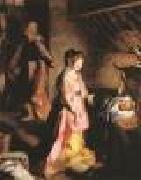 |
BAROCCI, Federico Fiori -- Click Here
|
|
Italian Baroque Era/Mannerist Painter, ca.1535-1612 |
|
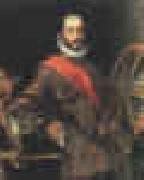 |
Barocci, Federico -- Click Here
|
|
Italian, 1535-1612
.Italian painter. The leading altar painter in Italy in the second half of the 16th century, he enjoyed a greater popularity and exerted a more profound influence on the art of his time than any of his contemporaries. His patrons included the Pope, Emperor, King of Spain and Grand Duke of Tuscany, and among his admirers were Lodovico Cigoli, Annibale Carracci, Rubens and Guido Reni. However, his work did not begin to receive the acclaim accorded that of Tintoretto or El Greco until the mid-20th century. Several factors have obscured his importance, notably the relative inaccessibility and scarcity of his painted works, most of which were done on commission for specific locations in remote parts of Italy (where they have remained), and the type of painting he produced, which was almost exclusively devoted to religious subjects. He executed very few easel paintings. No autograph example of his painted work has ever left Europe, the portrait of Quintilia Fischieri (c. 1600; Washington, DC, N.G.A.) and pair of portraits of Federigo Ubaldo, Prince of Urbino |
|
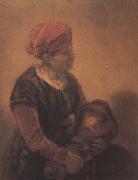 |
Barent fabritius -- Click Here
|
|
Dutch Baroque Era Painter, 1624-1673
Painter and draughtsman, brother of Carel Fabritius. Like Carel, he was first taught painting by his father, also learnt carpentry and practised as an artisan in Midden-Beemster in 1641. He is documented in Amsterdam in 1643 and 1647, though it is not known if, like his brother, he was also a pupil of Rembrandt. Nevertheless, his style is similar to that of the Rembrandt school. He must have been trained in the second half of the 1640s. His work is reminiscent of the style of his brother, who clearly influenced and may also have instructed him. In 1652 Barent lived in Amsterdam and married Catharina Mussers in Midden-Beemster. In the following years he is documented alternately in Midden-Beemster and Amsterdam. He painted a group portrait of the town master builder, Willem Leenderstsz. van der Helm and his Family (1656; Amsterdam, Rijksmus.), in Leiden, and in 1660-61 he received further commissions for the Lutheran church in Leiden. From 1669 Barent lived with his family in Amsterdam, where he died at the age of 49. He was buried in the churchyard in Leiden that was usually reserved for the poorer inhabitants of Amsterdam. |
|
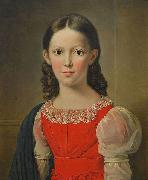 |
Axel Johan Fagerplan -- Click Here
|
|
Born 1788
Died 1865
Country Sweden |
|
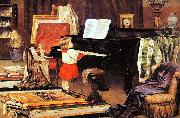 |
Aurelio de Figueiredo -- Click Here
|
|
painted Girl at the piano in 1892 |
|
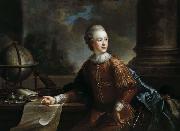 |
August Friedrich Oelenhainz -- Click Here
|
|
(June 28, 1745 - November 5, 1804) was a German painter.
|
|
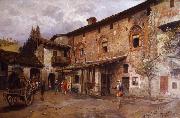 |
Arturo Ferrari -- Click Here
|
|
(Milan, 1861 - 1932) was an Italian painter.
Initiated into artistic studies by his father Cesare, an associate of Luigi Scrosati, and the painter Mose Bianchi from Lodi, Arturo Ferrari completed his training at the Brera Academy under the guidance of Giuseppe Bertini from 1877 to 1884 while working in the studio of Gerolamo Induno at the same time. He made his debut at the Esposizione di Belle Arti di Brera in 1879 with a view of the interior of Milan Cathedral, thus inaugurating the repertoire of Milanese perspective views that was to be a constant feature of his vast production of oil paintings and watercolours. He soon became the guiding spirit of a poetic and sentimental evocation of "Old Milan" during the phase of transition to the 20th century, when the face of the city changed radically through wholesale rebuilding. A regular participant in all the major exhibitions until 1932, the year of his death, he was the recipient of numerous marks of official recognition and enjoyed considerable success with the public as well as the esteem of conservative critics.
|
|
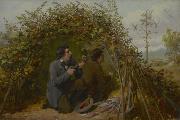 |
Arthur Fitzwilliam Tait -- Click Here
|
|
(February 5, 1819 -April 28, 1905) was an American artist who is known mostly for his paintings of wildlife. During most of his career, he was associated with the New York City art scene.
Tait was born in Lively Hall near Liverpool, England. At eight years old, because his father went bankrupt he was sent to live with relatives in Lancaster. It is during that time that he became attached to animals. Later on, in Manchester, England, Agnew & Zanetti Repository of Art acquired Arthur Tait who began self-learning to paint, as a twelve-year-old boy. |
|
 |
Antonio Maria Fabres y Costa -- Click Here
|
|
Spanish, 1854 - 1936
Antonio Fabres was a famous Spanish artist during the turn of the century. He was born in Barcelona Spain in 1854. It is said that he was the artist gene since his father was a draughtsman and his uncle a silversmith. He started studying at the Escuela de Bellas Artes in his native city at the age of 13. When he turned 21, he received a grant to study in Rome. There are records of his sculptures from early in his career but later on he became a painter almost exclusively. He joined Mariano Fortuny with a group that became known for their intense realism. Their popularity grew with the taste of the bourgeoisie seeking exotic images with oriental of medieval themes. He went back to Barcelona in 1886 and in 1894 he moved to Paris. The popularity he had earned during his decade in Italy helped him open a large studio where he could create complex scenes for the upper classes.
In 1902 the Academia de San Carlos decided to renovate their classical techniques with the ones of realism that were so popular in Europe at the time. Antonio Fabres was called to take the place of Santiago Rebull as head of this important institution. Although some of his students went on to become what was later known as the Post-Revolutionary Movement in Mexican art, the faculty had a hard time adapting to his distinct style and personality. In 1907, he returned to Rome. One of his last commissions in Mexico was the decorations of a hall at the Porfirio Diaz mansion where he mainly focused on art nouveau style .
Fabres was recognized most everywhere he traveled. He was acclaimed in Barcelona, London, Paris, Vienna and Lyon. At the end of his life he was dealt a very unfortunate blow when in 1926 he decided to donate a large amount of works to the Museo de Bellas Artes de Barcelona. In exchange for this generous donation he asked the Museum that a hall be built with his name, but the museum never built that hall and although he protested several times, they could never settle the argument. Antonio Fabres died in Rome in 1938.
|
|
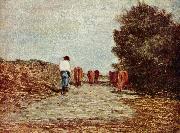 |
Antonio Fontanesi -- Click Here
|
|
23 February 1818 - 17 April 1882) was an Italian painter who lived in Meiji period Japan between 1876 and 1878. He introduced European oil painting techniques to Japan, and exerted a significant role in the development of modern Japanese yega (Western style) painting. He is known for his works in the romantic style of the French Barbizon school.
Fontanesi was born in Reggio Emilia, Emilia-Romagna, and trained with the landscape painters Prospero Minghetti and Vincenzo Carnevali. From 1841 to 1846 he made theatre sets and began painting landscapes. In 1850, he moved to Geneva, where he stayed until 1865. His main area of interest was landscape painting, which he expanded on after visiting the 1855 Exposition Universelle in Paris. He participated in important artistic exhibitions, displaying his works in Lyon, Turin, Milan, Florence, Genoa and the Triennial Exhibition of Fine Art in Bologna. He was nominated professor at the Academy of Lucca, but moved to Turin when a chair as a landscape professor was created specially for him at the Accademia Albertina in Turin from 1869 to 1876.
|
|
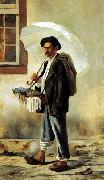 |
Antonio Firmino Monteiro -- Click Here
|
|
painted Matches in 1884 |
|
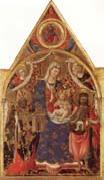 |
Antonio Fiorentino -- Click Here
|
|
Italian, 14th Century |
|
|
|
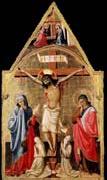 |
Antonio da Firenze -- Click Here
|
|
Italian Early Renaissance Painter, ca.1445-1510 |
|
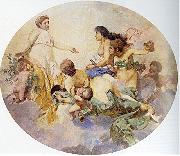 |
Antonio Cortina Farinos -- Click Here
|
|
February 16, 1841, Almassera, Valencia - November 6, 1890) was a Spanish artist. |
|
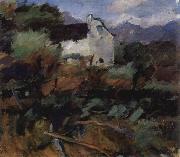 |
Anton Faistauer -- Click Here
|
|
painted Alte Muhle bei Maishofen in 1911 |
|
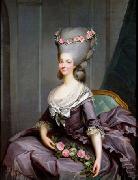 |
Antoine-Francois Callet -- Click Here
|
|
(1741-1823, Paris), generally known as Antoine Callet, was a French painter of portraits and allegorical works, who acted as official portraitist to Louis XVI.
He won the grand prix de Rome in 1764 with Cleobis et Biton conduisent le char de leur mere au temple de Junon (Kleobis and Biton dragging their mother's cart to the temple of Juno). He was accepted by the Academie des beaux arts in 1779, with his entry piece being a portrait of the comte d'Artois, and received with his allegory Le printemps (Spring) in 1781. He exhibited at the Salon from 1783 onwards. He painted the centre of the ceiling of the grande galerie of the palais du Luxembourg, with a composition entitled L'Aurore (Aurora). Under the French Consulate and the First French Empire he painted several more allegories, including an Allegorie du dix-huit brumaire ou la France sauvee (Allegory of 18 Brumaire, or France saved - 1801, château de Versailles) and an Allegorie de la bataille d'Austerlitz (Allegory of the Battle of Austerlitz - 1806, château de Versailles).
|
|
 |
Antoine Leon Morel-Fatio -- Click Here
|
|
French, 1810-1871 |
|
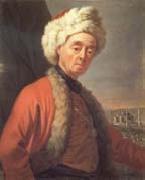 |
Antoine de Favray -- Click Here
|
|
French, 1706-died circa 1791,French painter. He is not documented until 1738, when he was mentioned as a private pupil of Jean-Fran?ois de Troy (ii), who was then director of the Acad?mie de France in Rome; in 1739 he became an official student at the Acad?mie. Among his student works is a copy (untraced) of Raphael's Fire in the Borgo (Rome, Vatican, Stanza dell'Incendio), which was mentioned by Charles de Brosses and exhibited in Paris in 1741. In 1744, for reasons that are not clear, he left Rome for Malta, remaining there for much of the rest of his career and devoting himself primarily to portraiture and genre painting. His ambition as a history painter, however, was fulfilled to a certain extent as a result of the patronage of two Grand Masters of the Order of the Knights of Malta, Manoel Pinto da Fonseca and Emmanuel de Rohan. His first dated picture executed in Malta is a Portrait of a Maltese Lady (1745; Paris, Louvre). |
|
 |
Anthony Vandyck Copley Fielding -- Click Here
|
|
English
1787-1855 |
|
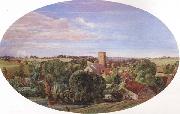 |
Anthony Frederick Augustus Sandys -- Click Here
|
|
1829-1904
English painter, illustrator and draughtsman. He was the son of Anthony Sands (1804-83), a minor local artist. He began his artistic education with his father and attended the Norwich School of Design from 1846. His precocious talent was recognized by the award of silver medals by the Society of Arts in 1846 and 1847. He moved to London in 1851, when he first exhibited at the Royal Academy, but he continued to spend time at Norwich until the death of his parents in 1883. After publishing in 1857 A Nightmare, a gentle caricature of John Ruskin and his Pre-Raphaelite prot?g?s William Holman Hunt, John Everett Millais and Dante Gabriel Rossetti and based on Millais's Sir Isumbras at the Ford (Port Sunlight, Lady Lever A.G.), he met Rossetti and became a member of his circle. |
|
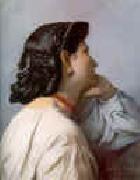 |
Anselm Feuerbach -- Click Here
|
|
1829-1880
German
Anselm Feuerbach Location
German painter. He studied in Germany, Paris, and Rome, spending much of his life in Italy. He sought to produce works of pure classicism that were both didactic and idealistic. Most of his famous works belong to his Roman period (1856?C73), including Battle of the Amazons (Nuremberg), Iphigenia (Stuttgart), and Medea (Munich). His portraits have withstood critical opinion better than his history paintings. His autobiography (1882) emphasizes his misunderstood genius. |
|
|
|
 |
Aniello Falcone -- Click Here
|
|
(1600-1665) was an Italian Baroque painter, active in Naples and noted for his painted depictions of battle scenes.
Born in Naples the son of a tradesman, he showed his artistic tendency at an early age. He first received some instruction from a relative, and then became one of the most prominent pupils apprenticed under Jose de Ribera. Salvatore Rosa, in turn, is said to have apprenticed under Aniello.
The Anchorite, ca. 1650 Wikimedia Commons has media related to: Aniello Falcone
Besides battle pictures, large and small, taken from biblical as well as secular history, he painted various religious subjects, which, however, count for little in his general reputation. He became, as a battle painter, almost as celebrated as Giacomo Borgognone, and was named L' Oracolo delle Battaglie. His works have animation, variety, truth to nature, and careful color.
Falcone was bold, generous, accustomed to arms, and an excellent fencer. In the insurrection of 1647, led by Masaniello, he resolved to be bloodily avenged for the death, at the hands of two Spaniards, of a nephew and of a pupil in the school of art which he had established in Naples. Salvator Rosa, Carlo Coppola, among others, and he formed an armed band named the Compagnia della Morte, or Company of Death. (See Salvator Rosa.) They battled in the streets by day; at night they were painters again, and handled the brush with impetuous zeal.
Rule restored, they decamped. Falcone and Rosa made off to Rome; here Borgognone noticed the works of Falcone, and became his friend, and a French gentleman induced him to go to France, where Louis XIV became one of his patrons. Ultimately Jean-Baptiste Colbert obtained permission for the painter to return to Naples, and there he died in 1665. |
|
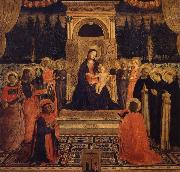 |
Angelico Fra -- Click Here
|
|
Italian painter, illuminator and Dominican friar. He rose from obscure beginnings as a journeyman illuminator to the renown of an artist whose last major commissions were monumental fresco cycles in St Peter and the Vatican Palace, Rome. He reached maturity in the early 1430s, a watershed in the history of Florentine art. None of the masters who had broken new ground with naturalistic painting in the 1420s was still in Florence by the end of that decade. The way was open for a new generation of painters, and Fra Angelico was the dominant figure among several who became prominent at that time, including Paolo Uccello, Fra Filippo Lippi and Andrea del Castagno. By the early 1430s Fra Angelico was operating the largest and most prestigious workshop in Florence. His paintings offered alternatives to the traditional polyptych altarpiece type and projected the new naturalism of panel painting on to a monumental scale. In fresco projects of the 1440s and 1450s, both for S Marco in Florence and for S Peter's and the Vatican Palace in Rome, Fra Angelico softened the typically astringent and declamatory style of Tuscan mural decoration with the colouristic and luminescent nuances that characterize his panel paintings. His legacy passed directly to the second half of the 15th century through the work of his close follower Benozzo Gozzoli and indirectly through the production of Domenico Veneziano and Piero della Francesca. Fra Angelico was undoubtedly the leading master in Rome at mid-century, and had the survival rate of 15th-century Roman painting been greater, his significance for such later artists as Melozzo da Forli and Antoniazzo Romano might be clearer than it is.
|
|
 |
ANGELICO Fra -- Click Here
|
|
Italian Early Renaissance Painter, ca.1387-1455
Italian painter, illuminator and Dominican friar. He rose from obscure beginnings as a journeyman illuminator to the renown of an artist whose last major commissions were monumental fresco cycles in St Peter's and the Vatican Palace, Rome. He reached maturity in the early 1430s, a watershed in the history of Florentine art. None of the masters who had broken new ground with naturalistic painting in the 1420s was still in Florence by the end of that decade. The way was open for a new generation of painters, and Fra Angelico was the dominant figure among several who became prominent at that time, including Paolo Uccello, Fra Filippo Lippi and Andrea del Castagno. By the early 1430s Fra Angelico was operating the largest and most prestigious workshop in Florence. His paintings offered alternatives to the traditional polyptych altarpiece type and projected the new naturalism of panel painting on to a monumental scale. In fresco projects of the 1440s and 1450s, both for S Marco in Florence and for S Peter's and the Vatican Palace in Rome, Fra Angelico softened the typically astringent and declamatory style of Tuscan mural decoration with the colouristic and luminescent nuances that characterize his panel paintings. His legacy passed directly to the second half of the 15th century through the work of his close follower Benozzo Gozzoli and indirectly through the production of Domenico Veneziano and Piero della Francesca. Fra Angelico was undoubtedly the leading master in Rome at mid-century, and had the survival rate of 15th-century Roman painting been greater, his significance for such later artists as Melozzo da Forli and Antoniazzo Romano might be clearer than it is. |
|
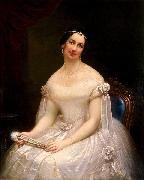 |
Anelli, Francesco -- Click Here
|
|
painted Julia Gardiner Tyler in 1846 - 1848
|
|
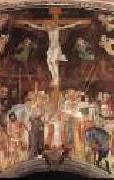 |
ANDREA DA FIRENZE -- Click Here
|
|
Italian Gothic Era Painter, ca.1343-1377 |
|
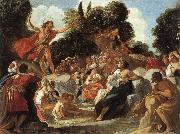 |
Anastagio Fontebuoni -- Click Here
|
|
Firenze 1571 -1626 |
|
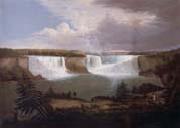 |
Alvan Fisher -- Click Here
|
|
American Painter, 1792-1863, American painter. Soon after he left the tutelage of John Ritto Penniman (c. 1782-1841), he began to paint genre landscapes such as Winter in Milton, Massachusetts (1815; Montclair, NJ, A. Mus.), which depicts a man on a horse-drawn sleigh enjoying the beauty of a fresh New England snowfall. |
|
|
|
Alexandre-Francois Caminade -- Click Here
|
|
Alexandre-Francois Caminade (December 14, 1783 - May 1862) was a French painter.
Caminade was born and died in Paris. He was a portraitist and a religious painter. He was Jacques Louis David's pupil. See also, Larousse article at Cyclopedia of Painters and Paintings, eds. John Desnison Champlin and Charles Callahan Perkins |
|
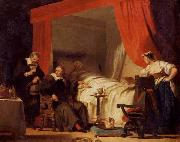 |
Alexandre-Evariste Fragonard -- Click Here
|
|
French Painter, 1780-1850,son of Jean-Honore Fragonard, was a French painter and sculptor in the troubadour style. He received his first training from his father and drew from him his piquant subjects and great facility, perfecting them under David. |
|
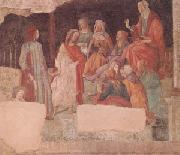 |
Alessandro Filipepe called botticelli -- Click Here
|
|
Florence ca 1445-1510 |
|
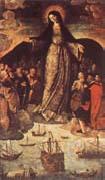 |
Alejo Fernandez -- Click Here
|
|
1475-1545 High Renaissance,Spanish,was a Spanish painter of the sixteenth century best known for his portrait of Christopher Columbus painted between 1505 and 1536. Fernandez arrived in Seville from Cordoba in 1508. He died in Seville around 1545. |
|
|
|
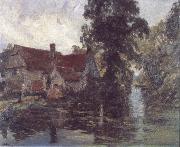 |
Albert Henry Fullwood -- Click Here
|
|
British, 1864-1930 |
|
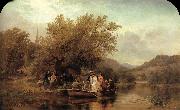 |
Albert Fitch Bellows -- Click Here
|
|
Nov.29.1829-Nov.24.1883, American landscape painter of the Hudson River School, was born at Milford, Massachusetts. He first studied architecture and opened his own architectural firm in 1849, but quickly turned to painting. From 1850 to 1856 he taught at the New England School of Design in Boston. He resigned his post to travel and study abroad, and spent time in Paris and at the Royal Academy at Antwerp as well as in England. He exhibited his first work at the National Academy of Design in 1857, becoming a full member in 1861, and he settled in New York City in 1858 on his return to America. Bellows spent most of his remaining career in New York, though he briefly moved to Boston. He visited Europe again in 1867. In New York he kept a studio in the same building as many of the notable Hudson River School artists of the time. His landscape work of the 1860s is fully in the late Hudson River School tradition, though Bellows depicted people more prominently in his landscapes than most other artists. He excelled at figurative scenes. Bellows also differed from most Hudson River School artists in that he became skilled at watercolor, and authored a respected book on the subject titled "Water-Color Painting: Some Facts and Authorities in Relation to Its Durability". He eventually maintained two studios, one for oil paintings and one for watercolor. He was a member of the American Watercolor Society, and an honorary member of the Royal Belgian Society of Water-Colorists. Bellows also mastered etching??along with Samuel Colman he was possibly the only other Hudson River School artist to do so??and became a member of the New York Etching Club, the Philadelphia Society of Etchers and the Royal Society of Painter-Etchers and Engravers in London, England, an esteemed professional organization whose members included James McNeil Whistler and Francis Seymour Haden. He died in Auburndale, |
|
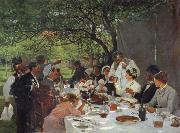 |
Albert Auguste Fourie -- Click Here
|
|
French, 1854-1896 |
|
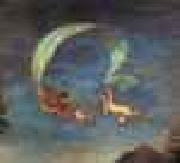 |
Albani, Francesco -- Click Here
|
|
Italian Baroque Era Painter, 1578-1660 Albani's students included Pier Francesco Mola and Andrea Sacchi. Italian painter and draughtsman. He was a distinguished artist of the Bolognese school, deeply influenced by Annibale Carracci's classicism, who worked in Rome as well as Bologna, painting altarpieces, frescoes and and cabinet pictures. His fame rests on his idyllic landscapes and small mythological pictures, |
|
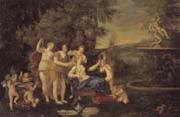 |
Albani Francesco -- Click Here
|
|
Italian Baroque Era Painter, 1578-1660
Italian painter and draughtsman. He was a distinguished artist of the Bolognese school, deeply influenced by Annibale Carracci's classicism, who worked in Rome as well as Bologna, painting altarpieces, frescoes and and cabinet pictures. His fame rests on his idyllic landscapes and small mythological pictures, |
|
 |
Albani Francesco -- Click Here
|
|
Italian, 1578-1660
Italian painter and draughtsman. He was a distinguished artist of the Bolognese school, deeply influenced by Annibale Carracci's classicism, who worked in Rome as well as Bologna, painting altarpieces, frescoes and and cabinet pictures. His fame rests on his idyllic landscapes and small mythological pictures, |
|
|
|
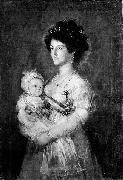 |
After Francisco de Goya -- Click Here
|
|
Francisco Jose de Goya y Lucientes (30 March 1746 - 16 April 1828) was a Spanish romantic painter and printmaker regarded both as the last of the Old Masters and the first of the moderns. Goya was a court painter to the Spanish Crown, and through his works was both a commentator on and chronicler of his era. The subversive and imaginative element in his art, as well as his bold handling of paint, provided a model for the work of later generations of artists, notably Manet, Picasso and Francis Bacon.
|
|
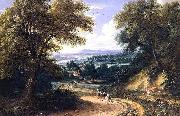 |
Adriaen Frans Boudewijns -- Click Here
|
|
Adriaan Frans Boudewyns, not Anton Frans (Bauduins, or Baudouin), (3 October 1644 - 3 December 1719) was a Flemish Baroque landscape painter.
He was born at Brussels and learned to paint under a landscape painter named Ignatius van der Stock, and was received into the Guild there in 1665. He then travelled to Paris in 1666 and studied under A. F. van der Meulen for three years, and whose daughter Barbara he married 12 January 1670. In 1674 his wife died and in 1681 he moved back to Brussels where he married again. According to Houbraken he was a good landscape painter who encourage Gerard Hoet to stay in Brussels for 8 months in the 1680s. His son Frans Boudewijns (1682-1767) also became a successful painter. He was ruined in the bombardment of Brussels in 1695.
Adriaen Fransz. Boudewijns, Adriaen Frans Boudewyns, Adriaen Frans Baudewijns, Adriaen Frans Baudewyns, Anton Frans Baudouin, Adriaen Frans Bauduins, Adrien François Bauduins, Monogrammist AFB |
|
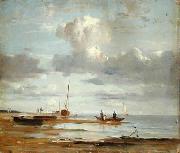 |
Adolph Friedrich Vollmer -- Click Here
|
|
(17 December 1806 - 12 February 1875) was a German landscape and marine painter and graphic artist. He and his contemporary, the painter Christian Morgenstern, were pioneers in Hamburg of early Realism in painting.
As son of a bookkeeper to a Hamburg merchant, Vollmer grew up in humble circumstances.[3] Determined to become a painter against the wishes of his father,[4] he became an apprentice to the brothers Suhr who owned a graphic workshop producing panorama prints. For one and a half years Vollmer travelled throughout Germany with one of the brothers, Cornelius Suhr, as had been Morgenstern before him. In 1826 he was introduced by the Hamburg art-dealer Ernst Harzen to the wealthy aristocrat and supporter of the arts, Carl Friedrich von Rumohr, who was patron to many young Hamburg artists among them Morgenstern and Otto Speckter. Probably on Rumohr advice Vollmer completed his studies under Christoffer Wilhelm Eckersberg at the Royal Danish Academy of Fine Arts in Copenhagen. He then moved to Munich from where he undertook journeys to Lake Konstanz, to the Austrian and Swiss Alps, to Venice, to Le Havre and to the Netherlands.
In 1839 Vollmer returned to Hamburg and settled there. One of his sons, Johannes Vollmer, became a prominent architect of protestant churches; a grand-son was the art historian and encyclopaedist Hans Vollmer who, for many years, edited the Thieme-Becker Kenstler Lexikon.
Vollmer became blind in 1866.
|
|
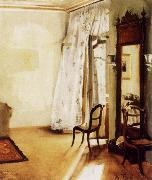 |
Adolf Friedrich Erdmann Menzel -- Click Here
|
|
1815-1905
Realism
German
|
|
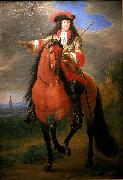 |
Adam Frans van der Meulen -- Click Here
|
|
painted Louis XIV before Strasbourg in 1682 |
|
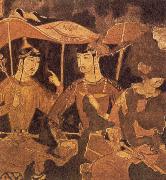 |
Abu l Faraj al Isfahani -- Click Here
|
|
Tenth century |
|
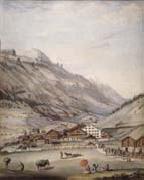 |
Abraham Fischer -- Click Here
|
|
1850 ?C 1913,was the sole Prime Minister of the Orange River Colony in South Africa. He was originally a lawyer in Cape Colony, joining the bar in 1875. He became vice-president of the Orange Free State's volksraad in 1893 and a member of the executive council in 1896. During the Boer War he went to Europe to solicit support for the Boers, returning in 1903 to practice law in the newly-formed Orange River Colony. Continuing to promote the Boer cause, he helped form the Oranje Unie party in May 1906 and became its chairman; the party won the majority of seats in the colony's first elections that were held in November 1907. On November 27, he was chosen as Prime Minister, and stayed in that position until it ceased to exist with the union of May 31, 1910. He then joined the cabinet of the Union of South Africa. |
|
|
|
 |
Giovanni Francesco Guercino -- Click Here
|
|
1591-1666
Italian
Giovanni Francesco Guercino Galleries |
|
 |
Francois Ferriere -- Click Here
|
|
1752-1839
Swiss
Francois Ferriere Location |
|
|
|
|
| | |
|
|
|
|